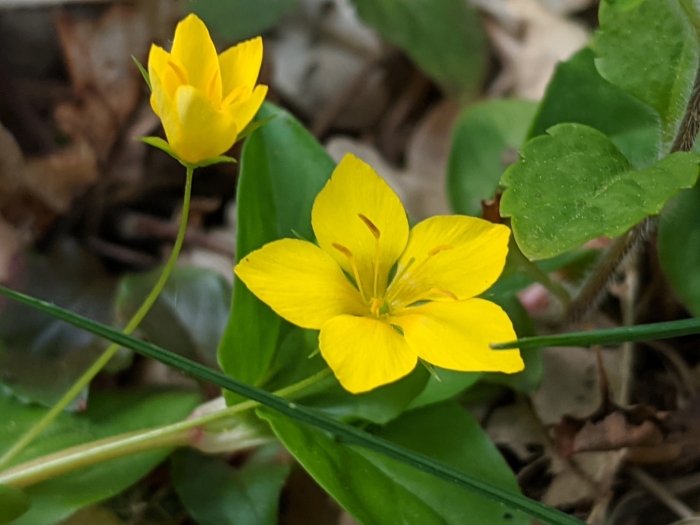Yellow Pimpernel
(Lysimachia nemorum)
Yellow Pimpernel (Lysimachia nemorum)
/
/

Dan Wrench
CC BY 4.0
Image By:
Dan Wrench
Recorded By:
Copyright:
CC BY 4.0
Copyright Notice:
Photo by: Dan Wrench | License Type: CC BY 4.0 | License URL: http://creativecommons.org/licenses/by/4.0/ | Rights Holder: Dan Wrench | Publisher: iNaturalist | Date Created: 2020-05-12T15:38:56-07:00 |



















Estimated Native Range
Summary
Lysimachia nemorum, commonly known as Yellow Pimpernel, is a deciduous perennial herb native to damp, shady deciduous woodlands and stream banks across Great Britain, Ireland, and eastern mainland Europe, from the Pyrenees to eastern Norway. It typically grows to a modest height of up to 16 inches (40 cm) with a spreading habit, featuring bright green, ovate to lanceolate leaves. From late spring to early summer, it produces small, star-shaped yellow flowers about 0.3 inches across, each borne singly on slender stalks. The flowers are subtly attractive rather than showy.
Yellow Pimpernel is valued for its ability to spread and form a low-growing ground cover in shady areas, making it a suitable choice for woodland gardens, shaded borders, and naturalized areas. It is relatively low maintenance, requiring moist, well-drained soil rich in organic matter, and it thrives in partial to full shade. While it is not known for serious disease or pest issues, it can become invasive in some conditions, spreading by rhizomes and self-seeding, so gardeners should monitor its spread to prevent unwanted naturalization.CC BY-SA 4.0
Yellow Pimpernel is valued for its ability to spread and form a low-growing ground cover in shady areas, making it a suitable choice for woodland gardens, shaded borders, and naturalized areas. It is relatively low maintenance, requiring moist, well-drained soil rich in organic matter, and it thrives in partial to full shade. While it is not known for serious disease or pest issues, it can become invasive in some conditions, spreading by rhizomes and self-seeding, so gardeners should monitor its spread to prevent unwanted naturalization.CC BY-SA 4.0
Plant Description
- Plant Type: Herb
- Height: 0.5-1 feet
- Width: 0.5-1 feet
- Growth Rate: Moderate
- Flower Color: Yellow
- Flowering Season: Summer
- Leaf Retention: Semi-deciduous
Growth Requirements
- Sun: Part Shade, Full Shade
- Water: Medium
- Drainage: Medium
Common Uses
Border Plant, Groundcover, Low Maintenance
Natural Habitat
Damp, shady deciduous woodlands and stream banks
Other Names
Common Names: Yellow Loosestrife, Wood Pimpernel
Scientific Names: , Lysimachia nemorum, Anagallis nemorum, Anagzanthe nemorum, Ephemerum nemorum, Godinella nemorum, Lerouxia nemorum, Lysimachia eileta, Lysimachia hochstetteri, Lysimachia nemoralis
GBIF Accepted Name: